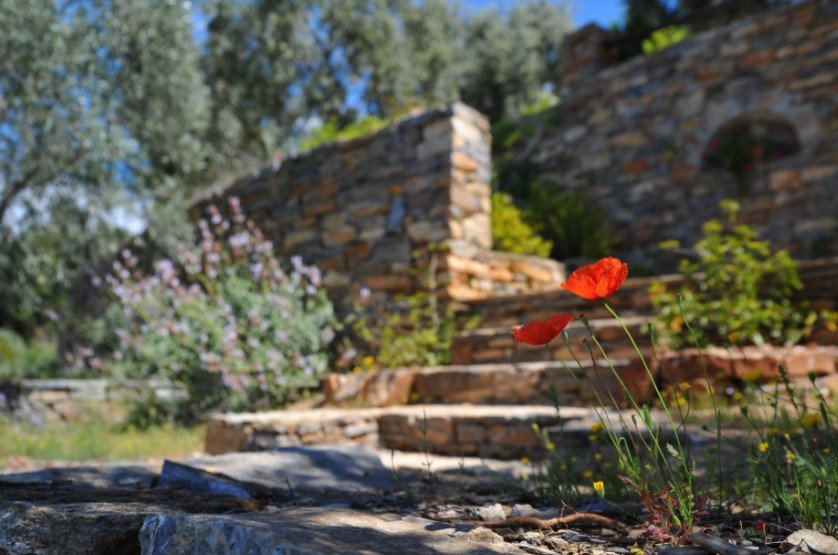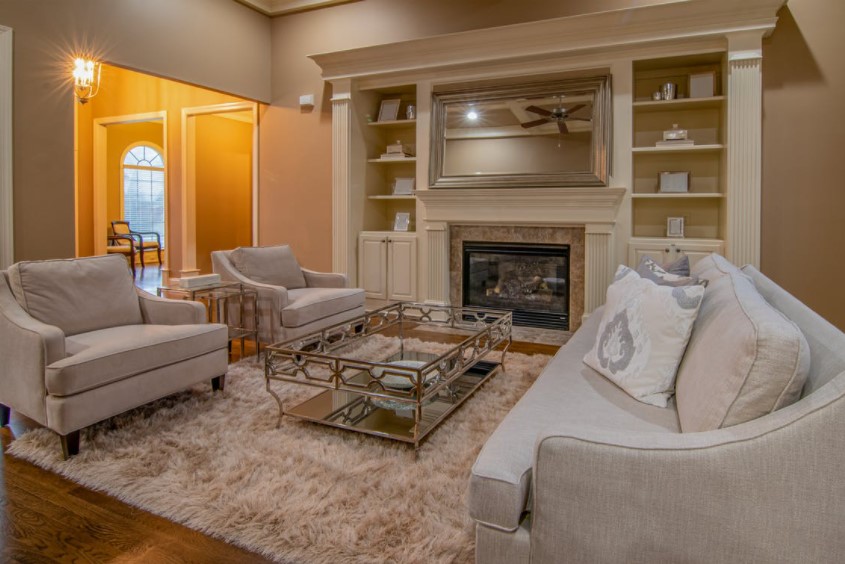Landscaping Tips for DIY Home Renovators

Landscaping, like renovating the inside, is hard to do all at once if you are living in the house and trying to enjoy the yard. Grid out the yard and give yourself a few seasons to make improvements on the basics before you make big changes.
Use What You Have
If you have a dry area that makes it hard to grow anything, you may have an ideal area for a rock garden that you can easily decorate with solar lights. If this area is higher than the rest of your yard, you might also consider using this patch of ground as a place to set a pergola or a screen house.
Working with existing conditions is not always possible or healthy. If you have a section of your yard that is always damp, for example, and it is close to your foundation, you will likely need to increase the drainage. You may also need to do some work around the outside of your foundation, such as waterproofing the exterior once you have dug down to install the French drain. Before you do any big landscaping projects around your foundation, correct the drainage and do your best to make sure you are not making anything worse.
Improve What is There
If your yard is big enough to need a sprinkler system, you may need to alter the pressure of your existing water flow before you start the process. A lift pump may be needed if your pressure is too low, while regulators will be required if pressure is too high.
Once you have your sprinkler lines laid out, make sure that you call before you dig. Depending on where you live, the depth of your sprinkler lines may be determined by the frost lines, and digging too deep could put you on a plane with phone lines, water lines and gas. Hand digging your sprinkler lines will probably not be a good option. You will need a trencher at the very least, so be sure to call before you start trenching.
Get Your Soil Tested
Before you start planting grass or putting down sod, you will need to get your soil tested for alkalinity or acidity. The testing of your soil pH will allow you to determine the best form of amendments to add to the soil for healthy grass growth.
Soil needs to be made up of
- sand, for good drainage
- clay, to hold onto moisture
- silt, a smaller particle than sand that also provides drainage
If your soil is loose and feels dry within a few days of rain, it is sandy. If it hangs onto moisture but is not too hard to turn over, it is silty. If it if sticky and slippery when wet or hard as a rock when dry, that is clay. You will need a combination of sand, silt and clay to create loam, the most useful soil for healthy lawns and gardens.
To improve your soil, start adding organic material. If you have no lawn at all, consider planting an annual grass, such as rye, and letting it die back each winter before planting again in the spring. Mow as you regularly would any turf, but let the clippings break down where they fall. The soil will benefit both from the fallen clippings and from the roots that are left to break down each year.
If you want to seed anything permanent and are interested in helping the bee populations, plant clover. You can enjoy a lush green groundcover, feed the bees by allowing it to flower and supplement it with grass seed as the soil improves each season. Clover will also fix nitrogen in the soil, greatly improving the quality of the soil in short order.
Sod, Seed, or Fake: Choose Your Grass
Depending on your location, xeriscaping may be a good option for your lawn. If you want visual variety, consider using fake grass in a few spots for color. Fake grass is best used in small areas where you are not planning to try to get a mower and where you will not be walking. While real grass cools the ground, fake grass gets much hotter.
Try to put fake grass in spots where it will not suffer too much pressure, such as from rolling carts or walkers. The materials used to back fake grass will eventually suffer from UV damage and the material will need replaced, but if you can avoid putting pressure on it, it will last longer.
If you really want some green but do not want to try to mow it, consider putting in a groundcover. Ice plant looks great in the landscape and needs to stay dry. The heat will not bother it, so if you can keep it from getting water logged, you can enjoy lush greenery, bright pink flowers, and great color. Other green groundcovers include thyme, which can often be walked on and smells great.
What to Plant Where
Once you have had your soil tested, you can start choosing your trees. If your soil is alkaline and your need a shade tree, consider a silver maple or an Australian pine. Buy your trees from a reputable nursery that starts trees in the zone where you live so you get a hearty plant that does not suffer a slow death in your yard.
Alkaline soils can also support fruit trees, including apricot and plum. If you are not ready to harvest fruit and keep it picked up, do not plant fruit trees. Dropped fruit can draw wasps and flies.
For those with acidic soil, consider an Autumn Blaze maple for lots of fall color and pomegranate or fig trees. Again, not every gardener will have the time or the inclination too keep fruit picked up.
Tools
A mower, a sharp shovel, a rake and hoses can honestly cover a lot of your needs for lawn and trees. It may be tempting to own bigger items, but even a garden tiller can be challenging to store and maintain on your own. If you have the space and want a tiller, by all means, get one. Unless you have an especially large yard or a health condition, do not buy a riding lawn mower. A garden tractor with a mowing attachment is often a better choice for big yards. When you are dealing with fallen or collapsed trees or an excessive amount of plant matter to mulch and dispose of, look around for chipper trucks for sale or for rent depending on the size of the job.
Your yard will take time to improve. Get the grass healthy before you put in shade trees. When those trees are well established, you can site your vegetable garden and your fruit trees.















